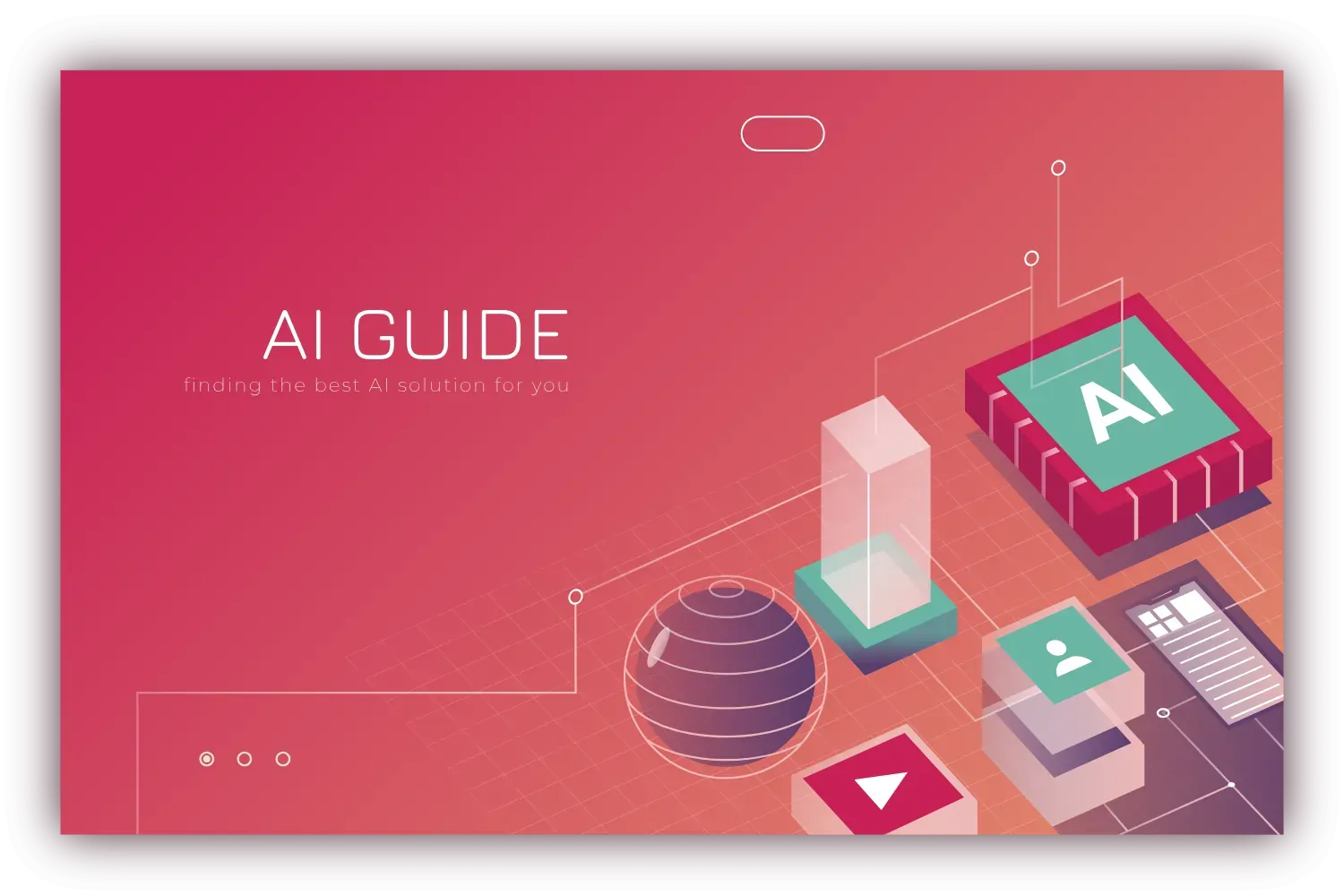 By: OpenKit on Nov 02 2024
By: OpenKit on Nov 02 2024 Choosing the Right AI Development Company - A Comprehensive Guide
An in-depth guide to selecting the perfect AI development partner for your business needs, covering everything from technical evaluation criteria to post-implementation success strategies.
Choosing the right AI development company can be a game-changer. It can propel your web applications and innovative solutions to new heights of user engagement and efficiency.
But the process is not without its challenges. The world of AI is complex, with a myriad of solutions and technologies to navigate. This guide aims to demystify the process. It will provide you with a comprehensive understanding of AI solutions and their application in web development. We’ll dive into the intricacies of AI chatbots, custom AI development, and more. We’ll also explore effective strategies for overcoming common challenges in the development process. By the end of this guide, you’ll be equipped with the knowledge to make an informed decision. You’ll be able to choose an AI development company that aligns with your project goals and delivers results.
Let’s embark on this journey of discovery together. Let’s unlock the potential of AI for your web applicaitons!
Understanding the Role of AI in Web Applications
AI is reshaping how web applications function. It’s not just about automating tasks; it’s about enhancing user interactions.
Integrating AI into web applications can revolutionise user engagement and satisfaction. It brings tailored experiences and efficient data processing to the forefront.
Various types of AI solutions exist. Here are a few:
-
Machine Learning: Offers advanced data analysis and predictive capabilities.
-
Natural Language Processing: Enhances communication interfaces like chatbots.
-
Computer Vision: Provides image recognition and understanding capabilities.
These solutions address distinct needs within web applications. Choosing the right one depends on your specific objectives. Understanding the nuances of each AI technology is crucial. It ensures a seamless integration that aligns with user needs and business goals.
The Impact of AI on User Experience
AI plays a significant role in enriching user experiences. It analyses user behavior to offer personalised content.
With AI, web applications become more interactive. They adapt in real-time to meet user preferences. This adaptability elevates user satisfaction. Moreover, AI streamlines processes, reducing wait times and enhancing efficiency. By doing so, users find applications more intuitive and responsive.
AI Chatbots and Customer Engagement
AI chatbots are transforming customer service. They provide instantaneous support, handling queries around the clock. These chatbots offer personalised interactions. They learn from user interactions, improving their responses over time. This learning capability fosters better engagement. The presence of AI chatbots also frees up human resources. They allow teams to focus on complex tasks, enhancing operational efficiency.
Identifying Your AI Development Needs
Before embarking on your AI journey, identifying your specific development needs is paramount. This step sets the foundation for a successful implementation. Different projects demand different AI capabilities. It’s essential to consider how AI can best address your unique business challenges and objectives.
Start by assessing your current infrastructure and resources. Consider the following when analysing your needs:
-
Business Goals: Define what you aim to achieve with AI.
-
User Experience: Identify how AI will enhance interactions.
-
Integration: Determine compatibility with existing systems.
-
Scalability: Plan for future growth and adaptability.
-
Budget and ROI: Analyse costs versus expected returns.
Having a clear understanding of these factors will guide you in choosing the appropriate AI development company. This ensures that the solutions align with your long-term strategy.
Custom AI Solutions vs. Off-the-Shelf Software
Choosing between custom AI solutions and off-the-shelf software depends on your needs. Custom solutions offer personalisation and flexibility. They can be tailored to align with your company’s unique goals and processes. This customisation often results in higher upfront costs, but it can deliver a competitive advantage in the long run. On the other hand, off-the-shelf software provides quicker deployment and lower initial costs. It may suit organisations with general requirements.
Consider your strategic goals and resource availability. The choice should enhance efficiency and support your business growth.
The Importance of a Tailored AI Strategy
A tailored AI strategy is crucial for maximising benefits. It ensures that AI solutions integrate seamlessly with your business operations. Such a strategy requires a thorough understanding of your industry landscape. It also involves knowing your competitors’ AI implementations and user expectations. Adopting a tailored approach allows for flexibility and innovation. It positions your organisation to adapt quickly to changing market demands.
By focusing on strategic alignment, you increase the likelihood of achieving meaningful AI-driven outcomes. This strategic focus translates into tangible improvements in performance and customer satisfaction.
Criteria for Choosing an AI Development Company
Selecting the right AI development partner is crucial. The company should align with your project goals and requirements.
There are several key criteria to evaluate when making your choice. These criteria ensure that your partnership is fruitful and meets expectations.
-
Technical Expertise: Check for skills in AI technologies relevant to your needs.
-
Experience Level: Consider companies with proven track records in successful projects.
-
Portfolio and Case Studies: Review past work to gauge capability.
-
Data Security: Prioritise partners who value privacy and protect sensitive information.
-
Communication and Project Management: Look for strong communication skills and aligned methodologies.
These criteria help in making an informed decision. They also mitigate risks associated with choosing the wrong partner.
Evaluating Technical Expertise and Experience
Technical expertise is a defining factor in AI development. The company must possess proficiency in modern AI technologies.
It should have experience with tools and programming languages pertinent to your project. Skills in machine learning, natural language processing, and data analysis are vital. Additionally, an experienced company understands industry-specific challenges. It leverages past knowledge to offer innovative solutions. Partnering with a technically adept company enhances project outcomes. It ensures that your AI initiatives are on solid technical ground.
Assessing the Company’s Portfolio and Case Studies
A company’s portfolio reflects its capabilities. Examining case studies provides insight into problem-solving skills and innovation.
Look for projects similar to your own. This gives a clearer picture of how the company approaches challenges. Case studies show how solutions are tailored and implemented. They highlight creativity and effectiveness. A robust portfolio indicates experience and reliability. It suggests the company has successfully navigated complex AI projects.
Data Security and Privacy Considerations
Data security is a paramount concern in AI development. Your partner must prioritise protecting your business and customer data. Inquire about the company’s data protection policies. Ensure they comply with relevant regulations and standards. Evaluate their approach to handling sensitive information. Encryption, access controls, and secure data storage practices are essential. The right partner will be transparent about their security measures. This transparency builds trust and ensures compliance with privacy laws.
Communication, Project Management, and Alignment
Effective communication fosters collaboration. It’s crucial for understanding project requirements and expectations. An AI development company should have a robust project management framework. This ensures timely delivery and manages resources effectively. Alignment on project goals is also vital. The company should grasp your vision and objectives, adapting them into their workflow. A communicative and aligned partner helps mitigate risks. It leads to smoother project execution and a successful AI implementation.
The Selection Process
Choosing the right AI development company involves several steps. A methodical approach ensures that you make the best choice.
Start by thoroughly researching potential partners. This research helps identify companies that match your technical and business requirements. Next, shortlist companies based on their expertise and experience. This step narrows your options to those most promising. Once you have a shortlist, request and evaluate proposals. Proposals provide insights into how each company can meet your project needs.
Finally, check reviews and references. This feedback from past clients offers valuable information on reliability and performance. Following these steps creates a structured selection process. It aids in finding a partner that meets your AI development needs.
Researching and Shortlisting Potential AI Development Companies
Research is foundational in the selection process. Begin by identifying companies with a robust presence in AI development.
Explore their websites, assess their technological capabilities, and note industry recognitions. Publications and interviews can offer insights too. With gathered data, start shortlisting companies. Focus on those with a strong alignment to your industry and technological needs. Shortlisting narrows the field to a manageable number. It provides a clear focus on evaluating the most suitable partners.
Requesting and Evaluating Proposals
Requesting proposals begins after shortlisting potential partners. A detailed request helps gather tailored responses.
Each proposal should outline the company’s approach to your project. It should detail their methodologies, timelines, and projected outcomes. Carefully evaluate each proposal for clarity and feasibility. This evaluation helps identify which company understands and can achieve your goals. Proposals are a window into a company’s strategic capabilities. They offer a preview of what working with them may entail.
Checking Reviews and References
Reviews and references paint a true picture of a company’s performance. They provide insights into customer satisfaction and reliability. Talk to past clients to understand the working relationship. Inquire about project delivery, communication, and overall experience. Online reviews and ratings further supplement this understanding. They reflect common issues and strengths witnessed by former clients. These insights should guide your final decision. A company with glowing reviews and positive references is likely a dependable choice.
Overcoming Challenges in AI Development
AI development presents unique challenges that require strategic solutions. Addressing these challenges is crucial for successful implementation.
One common obstacle is integrating AI with existing web infrastructure. This integration demands a seamless blend of old and new technologies. Scalability ensures that AI solutions grow with your business. Future-proofing helps AI remain viable as your company evolves. Balancing innovation with practical needs can be tricky. Companies often struggle to push boundaries while meeting everyday business realities.
Overcoming these challenges requires a strategic approach:
-
Evaluate existing systems for AI readiness.
-
Plan for both short-term and long-term scalability.
-
Balance cutting-edge technology with practical business needs.
These steps help in tackling AI development hurdles effectively. A proactive approach ensures smoother AI integration and future success.
Integrating AI with Existing Web Infrastructure
Integrating AI into existing web infrastructure involves careful planning. Legacy systems often lack the flexibility needed for AI.
To begin, assess current infrastructure’s compatibility. Consider how data flows and interacts across systems. Next, develop a robust integration plan. This plan should outline necessary updates and technology bridges. Testing is crucial before full integration. This phase identifies potential issues and ensures data integrity and system performance. Successful integration allows AI to complement existing capabilities. It builds a unified system that leverages both traditional and AI strengths.
Ensuring Scalability and Future-Proofing
Scalability ensures that your AI solution can grow with your business. Future-proofing maintains its value as conditions change.
Begin by assessing scalability needs. Consider current usage and potential growth scenarios. Design AI solutions with modular architecture. This approach supports expansion without disrupting existing functionality. Regular updates and performance evaluations help maintain AI relevance. An adaptable approach ensures solutions remain effective over time. Future-proofing involves staying aware of technological trends. Regular assessments and upgrades keep systems aligned with industry advancements.
Balancing Innovation with Practical Implementation
Balancing innovation with practical application is key. It combines cutting-edge AI technology with everyday operational needs.
Start by defining clear project goals. Align innovation with tangible business outcomes. Next, evaluate technology feasibility. Ensure proposed solutions are practical within your current environment. Integrate user feedback into development processes. This feedback helps gauge practicality and user acceptance. Balancing innovation prevents overextension and aligns efforts with achievable goals. It ensures AI projects deliver both novelty and value.
Leveraging AI for Competitive Advantage
AI technology offers significant advantages in staying ahead of competitors. Companies harness AI to drive innovation and rethink business models. One way AI provides a competitive edge is through automation. Streamlined processes and reduced manual effort improve efficiency. AI also enhances analytics capabilities. This allows organisations to make data-driven decisions and uncover new opportunities. Furthermore, AI personalises user experiences. Tailored interactions increase customer loyalty and engagement.
To fully capitalise on AI, companies can:
-
Embrace a culture of continuous innovation.
-
Align AI initiatives with strategic goals.
-
Invest in AI talent and development.
By leveraging AI, businesses can transform operations and boost their market position. AI serves not just as a tool but as a catalyst for change.
AI-Driven Innovation and Industry Transformation
AI-driven innovation reshapes entire industries. It encourages companies to rethink traditional practices.
For example, in retail, AI optimises inventory and predicts trends. In Law, it can help find key clauses across 1000s of pages using retrieval augmented generation. In healthcare, AI diagnoses diseases swiftly, enhancing patient care.
Industries such as manufacturing adopt AI for predictive maintenance. It reduces downtime and cuts costs.
AI’s transformative potential extends beyond operations. It inspires new business models and revenue streams. Ultimately, embracing AI-driven innovation prepares companies for future challenges. It fosters a mindset of agility and adaptability.
Measuring the Success of AI Integration
Measuring AI success involves specific metrics and outcomes. Organisations need to quantify AI impact meaningfully.
One metric is performance improvement. Compare productivity before and after AI implementation. Customer satisfaction indicators also gauge AI effectiveness. Enhanced engagement reflects positive AI impact. Cost savings and return on investment (ROI) are critical measures. Calculate financial benefits AI brings against initial investment. Define key performance indicators (KPIs) aligned with AI goals. Consistent evaluation ensures AI continues to meet organisational needs. Regular assessments allow adjustments and refinements. By measuring success, companies ensure AI initiatives deliver sustained value.
Maintaining and Refining AI Solutions Post-Deployment
After deploying AI solutions, the journey does not end. Ongoing maintenance and refinement are vital for sustained success.
Continuous updates ensure the AI remains effective. This involves fixing bugs and adapting to new data. Moreover, user expectations evolve. Regular adjustments help meet these changing demands and enhance user experience. A structured post-deployment plan keeps AI systems relevant. This includes monitoring performance and scheduling routine checks. Proactive management helps prevent issues before they impact. By refining AI solutions, organisations optimise performance and maximise value.
Key aspects of post-deployment maintenance involve:
-
Regular system updates.
-
Bug fixes and patches.
-
Performance monitoring.
-
User feedback analysis.
Staying committed to refining AI ensures long-term operational efficiency and user satisfaction.
The Role of User Feedback in AI Refinement
User feedback is a powerful tool in refining AI systems. It offers insights into real-world performance and areas for improvement.
Listening to users can uncover usability issues. Addressing these concerns enhances the overall user experience. Feedback also helps identify features that resonate. Iterative enhancements based on user input lead to more tailored solutions. A comprehensive feedback loop involves collecting, analyseing, and acting upon suggestions. Direct communication channels facilitate this process. Ultimately, user feedback ensures AI remains aligned with user needs. It fosters a culture of continuous improvement and responsiveness.
Support, Maintenance, and Continuous Learning
Effective AI support and maintenance require a dedicated team. This includes skilled professionals prepared to address challenges. Regular training keeps the team updated on AI advancements. Continuous learning empowers them to implement best practices. Additionally, a robust support framework assures users of consistent assistance. Resolving issues quickly minimises disruption. AI systems benefit from a proactive maintenance approach. Frequent evaluations help identify potential problems and prevent costly downtime. Ultimately, embracing a mindset of continuous learning ensures AI solutions evolve. It allows organisations to leverage emerging technologies and stay competitive.
Conclusion: Partnering for AI Success
Choosing the right AI development company is crucial for achieving project success. A strategic partnership can propel businesses towards innovation and competitive advantage.
By aligning with experienced AI experts, organisations can harness tailored solutions that meet specific needs. This collaboration ensures adaptability amidst evolving technological landscapes. A strong partnership fosters trust and transparency, enhancing project outcomes and maximising return on investment.
In conclusion, a diligent selection process followed by continuous engagement with your AI development partner is key. Together, you can drive digital transformation and secure a leading position in your industry.
FAQs on Choosing the Right AI Development Company
What should I look for in an AI development company?
When selecting an AI development company, consider technical expertise, industry experience, and a strong portfolio. Check for successful case studies relevant to your project.
How important is communication in AI projects?
Communication is crucial for aligning goals and ensuring project success. Regular updates and transparent discussions help navigate challenges effectively.
Are custom AI solutions better than off-the-shelf options?
Custom AI solutions provide tailored functionalities to address unique business needs. They offer greater flexibility and scalability compared to off-the-shelf options.
What role does data security play in AI development?
Data security is vital due to the sensitive nature of AI systems. Ensure your chosen company adheres to strict privacy and compliance standards.
How can I assess the success of AI integration?
Measure the impact of AI on process efficiency, user engagement, and ROI. Regularly review performance metrics and gather user feedback for ongoing improvements.






